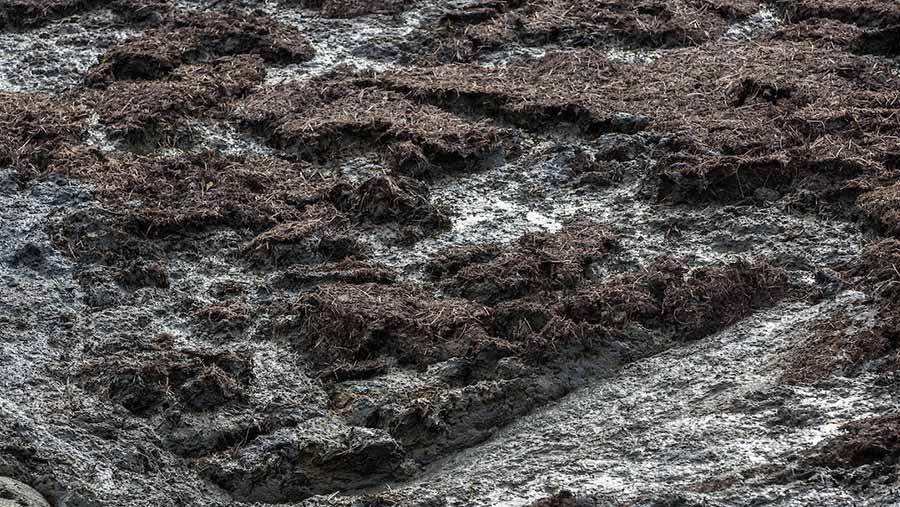Health and safety tips for taking slurry samples
 © Tim Scrivener
© Tim Scrivener Taking slurry samples is key to ensure spreading rates are correct, however slurry lagoons are one of the most dangerous areas on farm. Here is some advice for staying safe when taking samples this season.
Above-ground storage
Ideally, slurry should be fully agitated and sub-samples taken from the reception pit.
If this is not possible, provided there is safe access from an operator platform, the five sub-samples can be taken from a range of positions, using a weighted two-litre container attached to a rope.
Below-ground pits
It may be possible to obtain sub-samples at various positions using a weighted container as above, but never enter the pit, as lethal gases may be present.
See also: Guide to taking slurry analysis
Earth-banked lagoons
If the slurry has been well agitated, you can obtain sub-samples from the tanker or irrigator at intervals during spreading. Do not sample direct from the lagoon unless a secure operator platform provides safe access.
Solid manure
Take at least ten sub-samples of about 1kg each, as described below, and place on a clean, dry tray or sheet. Break up any lumps and thoroughly mix the sample before taking a sub-sample of about 2kg.
Muck heaps
If the manure is dry and safe to walk on, identify at least 10 locations that appear to be representative of the heap.
Clear away any weathered material with a spade or fork, dig a hole; 0.5m deep and take a 1kg sample from each point.
Alternatively, if it is not safe, take sub-samples from the face of the heap at various stages during spreading.
Weeping-wall stores
Do not take samples before the store is emptied, as it is not safe to walk on the surface of the stored material. Sub-samples may be taken from the face of the heap once emptying begins.
